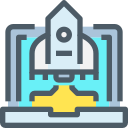Chosen theme: Beginner’s Guide to IT Career Paths. Explore approachable routes into tech, from first steps to first job, with stories, strategies, and friendly guidance. Subscribe, ask questions, and shape your path with us.

Software Engineering vs. IT Support: Different Missions, Shared Impact
Software engineers build features and systems, while IT support professionals keep people productive by resolving issues and maintaining reliability. Consider whether creating new tools or empowering users daily feels more inspiring to you as a beginner.

Data, Cloud, and Cybersecurity: Three Powerful Growth Arenas
Data roles turn information into action, cloud specialists design scalable foundations, and cybersecurity defenders safeguard trust. As a newcomer, explore starter labs, simple datasets, and hands-on tutorials to see which mindset sparks your curiosity most naturally.

Product, QA, UX, and DevOps: Collaboration at the Core
Product managers connect user needs to priorities, QA testers protect quality, UX designers elevate experiences, and DevOps engineers streamline delivery. If you enjoy teamwork, feedback, and continuous improvement, these routes offer lively collaboration from day one.
Self-Assessment: Interests, Strengths, and Lifestyle Fit
Curiosity, Patience, and Problem Patterns You Love Solving
Do you enjoy debugging puzzles, crafting intuitive interfaces, or explaining complex ideas clearly? Track moments of flow this week, then match them to roles requiring similar strengths, and tell us which patterns you noticed most often.
Work Environments: Solo Focus or Collaborative Buzz
Some paths favor deep focus sessions, while others thrive on cross-team conversations and frequent feedback. Imagine a typical day that excites you, then choose a path aligned with that rhythm, and ask peers for honest, practical perspectives.
A Beginner’s Story: From Hobby Tinkering to Quality Assurance
Maya started by fixing family laptops, then realized she loved preventing issues even more. QA appealed because tests felt like puzzles; she now mentors newcomers, reminding them to practice clear bug reports and celebrate every verified fix proudly.


Universal Foundations: Thinking, Tools, and Habits
Learn basic computational thinking, version control with Git, and command line essentials. Practice note-taking, rubber-duck debugging, and consistent study sessions. These habits support every IT path, giving you momentum before specialization demands greater depth.

Choose Your Format: College, Bootcamp, MOOC, or Self-Study
Each path can work if you stay consistent. Combine structured courses with hands-on practice and community accountability. Start with one foundational resource, one tutorial project, and one weekly discussion thread to consolidate learning and reinforce timely feedback loops.

90-Day Starter Plan: Projects That Map to Roles
Pick a small portfolio goal aligned with your chosen path, like a help desk troubleshooting log, a simple API, or a dashboard. Track milestones weekly, reflect openly, and subscribe for our 90-day planner to stay motivated.

Networking and Mentorship: Finding Allies Early
Reach out politely, share why their work resonates, and ask two focused questions. Offer to summarize insights for others. This respectful approach leads to generous guidance, occasional referrals, and a clearer picture of day-to-day realities.

Networking and Mentorship: Finding Allies Early
Join beginner-friendly groups where practice challenges and code reviews happen regularly. Consistency matters more than bravado. Show up weekly, share progress, and celebrate small wins; trust grows, and so does your professional confidence and technical fluency.
Applications, Interviews, and First Offers
Resumes That Survive Screening and Spark Curiosity
Use keywords that match the role, quantify outcomes, and keep formatting clean. Lead with projects and skills relevant to your chosen path. Show initiative and clarity, then link directly to case studies with concise, compelling summaries and visuals.
Technical Exercises and Practical Demos
Rehearse whiteboard thinking, pair programming etiquette, and troubleshooting under time pressure. Practice narrating decisions and trade-offs. Even if you cannot finish, communicate next steps confidently, showing logic, curiosity, and the humility to learn quickly from feedback.
Evaluating Teams, Culture, and Growth Potential
Ask about onboarding plans, mentoring structures, and learning budgets. Look for psychological safety and clear feedback loops. If expectations are vague or dismissive, consider whether the environment suits your beginner needs and long-term development goals genuinely.
A Day in the Life Across IT Roles
They review alerts, prioritize tickets, and coordinate with network teams for maintenance windows. The job rewards thoughtful triage, predictable routines, and troubleshooting communication that keeps stakeholders calm while issues are tracked to resolution carefully.




